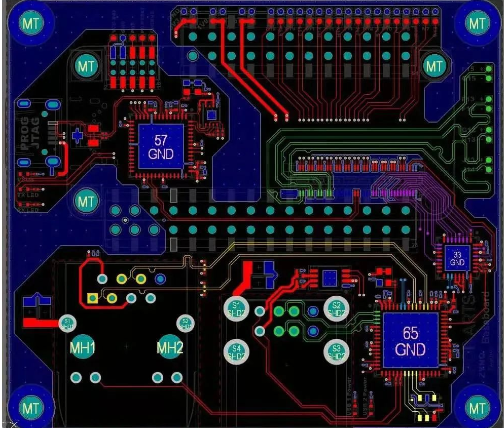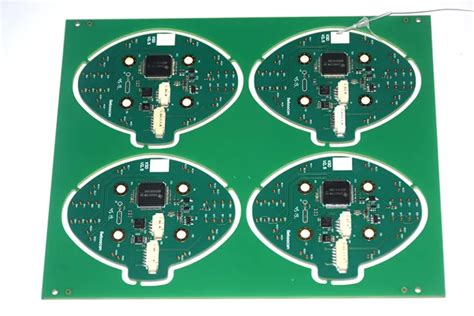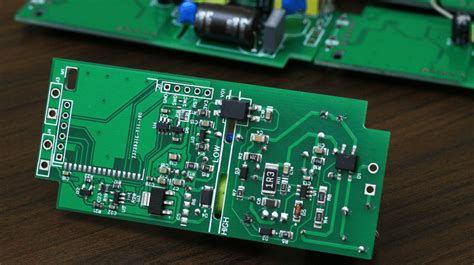Mastering Complex PCB Assembly: Techniques for Success
Key Takeaways
Mastering complex PCB assembly involves a variety of essential strategies and techniques tailored to enhance both performance and quality in the production of intricate circuit boards. When engaging in PCBA, it is crucial to understand the importance of precise placement of components, as this significantly impacts the overall robustness and functionality of the final product. Furthermore, familiarity with common challenges such as thermal management or signal integrity can empower you to devise informed solutions during the assembly process. Emphasizing uniform soldering techniques ensures consistency, while utilizing top-tier tools effectively streamlines workflow. As complexity increases in designs, integrating advanced testing methods becomes necessary for verifying circuit performance and identifying potential faults early on. The pursuit of delivering high-quality PCB assembly will also benefit from ongoing education about emerging technologies and trends within the electronics manufacturing industry. Adopting these best practices will undoubtedly enhance your capabilities in producing reliable and efficient PCBs tailored for a myriad of applications.
Introduction to Complex PCB Assembly
In today’s rapidly evolving electronics landscape, pcb assembly has become increasingly intricate, necessitating a thorough understanding of various concepts and skills to achieve success. Complex pcba involves integrating a wide array of components on a single board, which may include surface mount devices (SMDs), through-hole components, and connectors that require precise alignment and placement. Mastering this process demands knowledge not only of the mechanical aspects but also of the electrical design principles that govern functionality.
One crucial aspect of complex PCB assembly is understanding the layers involved in the design. A multi-layer board enhances functionality but also complicates the assembly process due to the increased potential for errors in placement and connectivity. Adopting reliable assembly techniques and utilizing appropriate tools are essential for minimizing these issues. The choice of solder, as well as soldering techniques, can significantly impact the quality of the final product.
To illustrate these complexities, consider a standard table listing common components found in intricate pcb assemblies:
| Component Type | Description | Common Usage |
|---|---|---|
| Surface Mount Devices | Small components soldered directly onto PCB surface | High-density interconnections |
| Through-Hole Components | Components inserted into drilled holes | Mechanical stability |
| Connectors | Interfaces for power or signal transmission | Making connections to external devices |
Each component type serves specific functions within a circuit and understanding their placements is critical for optimal performance. Enhanced attention to detail, rigorous testing, and adherence to best practices can lead to significant improvements in efficiency and precision during the assembly process. By honing skills in these areas, individuals can navigate the complexities involved in creating high-quality PCB designs effectively, ultimately contributing to successful electronics projects across various applications.
Understanding the Components of PCB Design
To successfully navigate the intricacies of pcb assembly, it is essential to understand the fundamental components involved in PCB design. A printed circuit board (PCB) serves as the backbone for electronic devices, linking various components such as resistors, capacitors, and microcontrollers. These elements must be meticulously planned and arranged to ensure optimal functionality. Key factors include trace width, which affects current carrying capacity; layer stack-up, necessary for accommodating complex circuits; and pad design, critical for proper soldering during pcba processes. Additionally, understanding the role of silkscreens, which denote component placement and orientations, is vital to prevent assembly errors. Moreover, considering the thermal management of components contributes significantly to performance reliability. By grasping these fundamental aspects, engineers can enhance their proficiency in creating intricate circuit boards that meet the demands of today’s sophisticated applications while achieving greater precision and efficiency in their work.
Essential Tools for Complex PCB Assembly
To achieve success in complex PCB assembly, having the right tools at your disposal is crucial. Each tool serves a specific function that can significantly impact the quality and efficiency of your PCBA process. First and foremost, a precise soldering iron equipped with adjustable temperature settings is essential for ensuring proper solder joints, especially in intricate designs. A reliable soldering station enhances the control you have while working on delicate components. Along with this, utilizing a high-quality multimeter is vital for diagnosing issues and verifying connections during the assembly process.
Moreover, a set of precision tools such as tweezers, magnifying lamps, and PCB holders will aid in manipulating small parts effectively, allowing for an organized workspace that minimizes errors. Desoldering tools are equally important as they allow for quick repairs or adjustments without damaging other components on the board. For advanced projects, consider integrating automated techniques with specialized machines like pick-and-place systems, which can significantly streamline the assembly process while enhancing precision. By incorporating these essential tools into your workflow, you not only optimize your PCBA experience but also ensure that each project meets high standards of quality and reliability in performance.
Best Practices for Soldering Techniques
When it comes to pcb assembly, mastering your soldering techniques is paramount for achieving quality results. First and foremost, ensuring cleanliness at the work surface and on the components is essential. Dust and contaminants can lead to poor solder connections, compromising the overall reliability of the pcba. Before starting any project, it’s advisable to wear appropriate safety equipment, such as gloves and goggles, to protect against potential hazards associated with soldering.
One of the best practices is to use the right soldering iron with a suitable tip size for your specific components. A well-tipped iron allows for better heat transfer and minimizes the risk of damaging sensitive parts during the pcb assembly process. Preheating your circuit board can also aid in ensuring uniform heat distribution, making it easier to manage heat-sensitive components.
Additionally, adhering to recommended temperatures for your specific solder type is crucial; excess heat can lead to component failure or create unwanted solder joints. When soldering, apply just enough solder to ensure a solid connection without creating excessive blobs or cold joints—both of which can lead to circuit malfunctions later on.
Finally, if you’re working on intricate designs or have limited space on your board, consider using a microscope or magnifying lamp for precision during assembly. This practice not only improves accuracy but can also significantly enhance overall efficiency, giving you the extra edge needed when tackling complex pcb assembly projects. Implementing these best practices in your soldering techniques will ensure that you produce high-quality pcba, capable of meeting all application requirements effectively.
Strategies for Testing and Troubleshooting
When it comes to complex PCB assembly (PCBA), testing and troubleshooting are crucial to ensure that the assembled boards function as intended. Start by implementing systematic testing approaches, such as electrical testing, which verifies the integrity of connections and components. Utilizing thorough visual inspections as part of your process can help identify obvious issues, such as misplaced components or soldering defects.
Make use of diagnostic tools like oscilloscopes or multimeters during your troubleshooting phase, as they can provide real-time insights into the performance of your circuit. Establishing a test plan with specific criteria for functionality not only assists in pinpointing problems but also helps track your assembly’s consistency over time.
“A well-structured test plan acts like a roadmap. It allows you to navigate through potential problems systematically.”
It is also beneficial to maintain comprehensive documentation of both the initial design and any changes made during the assembly process. This documentation serves as a valuable reference during troubleshooting, ensuring that any alterations are contextually understood. Moreover, embracing a culture of continuous improvement through iterative feedback can let you refine your PCB assembly techniques gradually.
Lastly, engaging with peers or professionals in the industry can provide fresh perspectives on common pitfalls and innovative solutions, enhancing your troubleshooting capabilities further while ensuring quality in PCBA.
Tips for Enhancing Precision and Efficiency
To achieve success in pcb assembly, it’s vital to implement strategies that enhance both precision and efficiency throughout the process. One of the primary techniques involves meticulous planning and preparation before beginning the pcba process. This includes ensuring that all components are organized and clearly labeled, as a well-prepared workspace can significantly reduce the chance of mistakes. Additionally, employing advanced tools such as automated soldering machines can improve accuracy in placing components on circuit boards, thereby enhancing the overall quality of the assembly.
Furthermore, learning accurate soldering techniques is essential. Investing time in mastering various soldering methods—like wave soldering or reflow soldering—can ensure that connections are reliable and minimize defects. Combining this with regular maintenance on tools and equipment can lead to consistent performance over time.
It’s equally important to utilize simulation software during the design phase to visualize how components will interact once assembled. These tools can help identify potential issues early in the design process, which allows for corrective actions to be taken before physical assembly begins. Establishing a systematic approach to testing throughout every stage of pcb assembly is also crucial, as it helps catch errors promptly and prevents them from cascading during later stages.
By integrating these methods into your workflow, you will not only enhance precision but also significantly improve efficiency, ultimately leading to more successful pcba outcomes.
Case Studies: Successful Complex PCB Projects
In the realm of complex PCB assembly (PCBA), real-world applications serve as invaluable references for both novice and seasoned professionals. Successful projects often showcase the effective integration of advanced design principles, meticulous planning, and efficient execution. For instance, a telecommunications company developed a sophisticated PCB assembly for a 5G base station, which involved layering multiple components to handle higher data rates while maintaining signal integrity. This project utilized advanced software for layout optimization, ensuring that each layer was meticulously aligned to minimize crosstalk and interference.
Another compelling case involves a medical device manufacturer that required intricate assemblies to be used in life-saving equipment. This project emphasized the importance of reliability and adherence to regulatory standards. By implementing thorough testing protocols throughout the PCBA process, from initial prototypes to final production runs, the team successfully identified potential failure points early on, vastly improving their production yield.
These examples underscore essential themes in complex PCB assembly, such as the necessity for collaborative communication among engineers, designers, and quality assurance teams. They also highlight the value of utilizing cutting-edge tools designed for PCB assembly, which can dramatically enhance both precision and efficiency. As evidenced by these case studies, success in this field is marked not only by technological prowess but also by strategic thinking and an unwavering commitment to quality throughout every stage of development.
Future Trends in PCB Assembly Technology
The landscape of pcb assembly and PCBA continues to evolve rapidly, driven by advancements in technology and changing market demands. One notable trend is the increasing integration of automation into the pcb assembly process. Automated machinery, such as soldering robots and high-speed pick-and-place systems, not only enhances efficiency but also improves accuracy in component placement, which is crucial for complex assemblies. Moreover, the growing importance of Internet of Things (IoT) devices has led to a surge in demand for highly miniaturized circuit boards. This requires innovative pcb assembly techniques that ensure reliability and performance without compromising on size. Additionally, as manufacturers strive for sustainability, there is a push towards eco-friendly materials and processes in PCBA. For instance, the adoption of lead-free solder and recycling initiatives for electronic waste reflects this commitment to environmental responsibility. Another emerging trend is the utilization of Artificial Intelligence and machine learning to streamline production processes, facilitate real-time quality control, and enhance design capabilities. These technologies help in predicting potential failures during production phases, allowing for proactive adjustments that maintain quality standards. As these trends continue to shape the industry, staying informed about advancements will be essential for professionals involved in complex PCB assembly efforts across various applications.
Conclusion
In summary, mastering complex PCB assembly is essential for creating efficient and functional devices that meet the demands of modern technology. By understanding the intricacies involved in PCB design, including the selection of components and their intricate placements, one can significantly enhance the quality of the final product. Utilizing the right tools for PCBA is paramount; from precision soldering stations to advanced testing equipment, having access to top-tier tools can make a notable difference in both accuracy and efficiency. Adopting best practices for soldering techniques ensures reliable connections, while strategic testing methodologies can help in identifying potential issues early in the development process. Ultimately, as you delve further into advanced techniques and stay updated with emerging trends in PCB assembly technology, you will not only refine your skills but also contribute to innovative solutions across various industries. The journey towards excellence in pcb assembly is continuous, offering both challenges and opportunities for growth.
FAQs
What is PCB assembly?
PCB assembly, commonly referred to as PCBA, is the process of soldering electronic components to a printed circuit board (PCB) to create functional electronic devices.
Why is mastering complex PCB assembly important?
Mastering complex PCB assembly is essential for ensuring precision and efficiency in creating intricate circuit boards, which can significantly enhance the reliability and performance of electronic products.
What tools are necessary for complex PCB assembly?
Essential tools for PCB assembly include soldering stations, magnifying glasses, tweezers, multimeters, and specialized software for design and layout.
What are the best practices for soldering techniques in PCBA?
Best practices involve using the right temperature settings, ensuring a clean surface for soldering, and applying an appropriate amount of solder to avoid cold joints or excess.
How can I enhance precision in my PCBA work?
To enhance precision in PCBA, consider using high-quality components, closely following design specifications, and employing advanced tools such as pick-and-place machines.
What strategies should I use for testing and troubleshooting PCB assemblies?
Effective strategies include visual inspections, functional testing with specific test setups, and utilizing diagnostic software to identify faults early in the assembly process.







